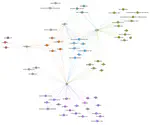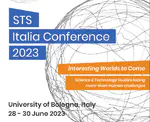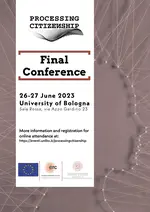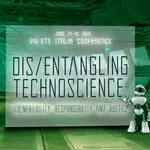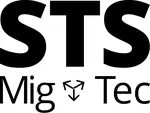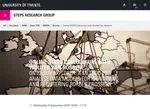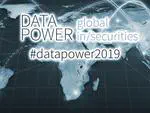Processing Citizenship
 Processing Citizenship project logo
Processing Citizenship project logoMy work for the Processing Citizenship project is connected to WP2 (“To analyse and compare information systems used to register migrants across diverse Hotspots”). The method and software tool developed for this was used to conduct a script analysis for WP3 comparing “intended migrants” identities “inscribed” in information systems with actual migrants practices of resistance to being registered. Furthermore, my research contributes to answer WP4, RQ7A (How are relationships between EU and MS enacted through efforts to achieve interoperability?) by investigating the interoperability of identity data between EU and MS systems.
More generally, my research focuses on the complex phenomenon of matching identity data. For instance, are you aware that from booking to boarding a flight, your personal data is being matched against various police watchlists to identify potentially risky travellers? To make this matching possible, sophisticated algorithms are used to deal with uncertainties in their data—think: typing errors, transcription variations of names, etc.
Main research question
I am particularly interested in how transnational security infrastructures shape and are shaped by these technological advancements. My main research question therefore asks:
“How are practices and technologies for matching identity data in population management shaping and shaped by transnational security infrastructures?”
In my dissertation introduce a conceptual framework that aims to analyse data matching from four different perspectives:
- how types of data collected about people can be compared and what this tells us about how organisations can search, match, and use this data,
- how within organisations search and match for data about people,
- how such identity data is matched between organisations,
- how, at the same time with matching identity data, data matching technologies and practises evolve.
Methods
To trace the matching of identity data in security infrastructures, I took advantage of well-established methods from the areas sociotechnical research to investigate the relations between the technologies, users, and organizations. Hence, I draw on data gathered through fieldwork — interviews, documents, field notes — at a supplier of a data matching software that is used by EU and Member State authorities.
The Ontology explorer
One of the main outcomes of my research has been development of the Ontology Explorer together with Prof. Annalisa Pelizza. The Ontology Explorer was devised to understand how people are “inscribed” in information systems: which assumptions are made about them, and which possibilities are excluded by design. The outputs and results of this work is split up in a few outputs.
First, the following article introduces the methodology of the “Ontology Explorer” to analyse data models underpinning information systems.
Van Rossem, Wouter, and Annalisa Pelizza. 2022. ‘The Ontology Explorer: A Method to Make Visible Data Infrastructures for Population Management’. Big Data & Society 9 (1): 1–18. https://doi.org/10.1177/20539517221104087.
Second, the following repository contains the source code for the JavaScript-based open-source tool of the Ontology Explorer methodology. A version is hosted on the Processing Citizenship website at https://processingcitizenship.eu/ontology-explorer/.
Van Rossem, Wouter. 2021. ‘Ontology-Explorer’. Zenodo. https://doi.org/10.5281/zenodo.4899316.

